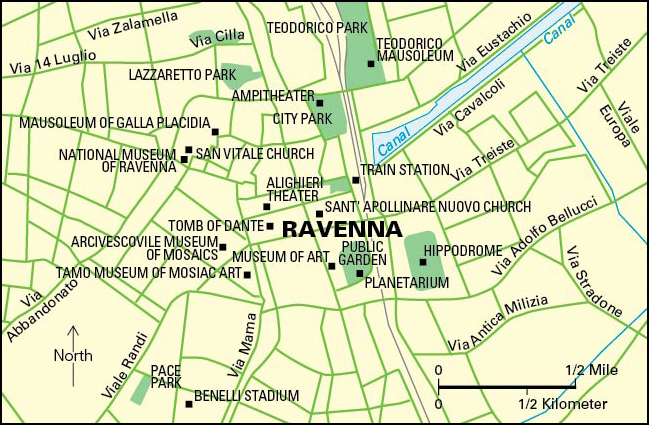Ravenna, << ruh VEHN uh >> (pop. 156,080), is a city in northern Italy, famous for its art treasures and architecture. It is also an agricultural and manufacturing center. A 6-mile (10-kilometer) canal connects Ravenna with the Adriatic Sea.

Ravenna’s Mausoleum of Galla Placidia, built about A.D. 440, is one of the oldest examples of early Christian architecture. It has some of the most beautiful mosaics in Ravenna. The famous churches of San Vitale, Sant’ Apollinare Nuovo, and Sant’ Apollinare in Classe, built in the 500’s, also contain beautiful mosaics.
Ravenna served as the capital of the West Roman Empire from about 402 until the Germanic leader Odoacer seized the empire in 476. Then Theodoric, king of the Ostrogoths, murdered Odoacer and took over the city. Ravenna was part of the Byzantine Empire from about 540 until the 700’s. It was one of the Papal States for many years, and it became part of the Kingdom of Sardinia in 1860. Ravenna became part of the Kingdom of Italy in 1861.
See also Emilia-Romagna.
